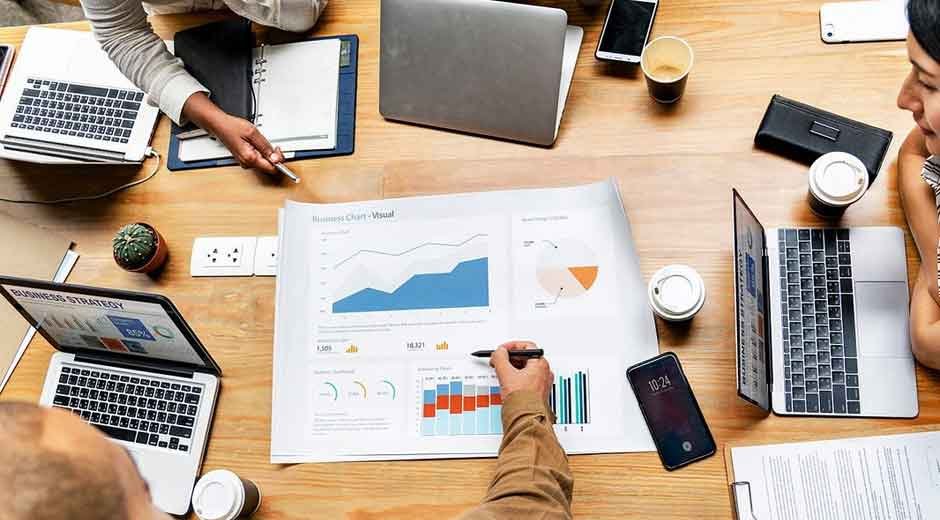Managing properties is no small task. Whether you handle one apartment or several rental buildings, there are always rent payments to track, maintenance requests to handle, and tenants to communicate with. For years, landlords and property managers relied on notebooks, spreadsheets, and phone calls to keep everything organized. But as technology has advanced, a new solution has taken center stage: Property Management Software.
In this article, we’ll explore how traditional methods compare to modern software tools, their pros and cons, and why switching to digital management can make your work easier and more efficient.
What Is Property Management Software?
Property management software is a digital tool designed to help landlords, real estate managers, and property owners manage all day-to-day operations in one place.
It usually includes features such as:
- Rent collection and payment tracking
- Tenant communication and notices
- Maintenance request management
- Accounting and financial reports
- Lease tracking and document storage
In simple words, it replaces piles of paper and manual work with an easy online dashboard that saves time, reduces errors, and improves organization.
How Traditional Property Management Works
Before software came into the picture, property management was mostly manual.
Here’s what the traditional process looked like:
- Rent collection:Tenants paid rent by cash or check. The manager would record payments in a register or spreadsheet.
- Maintenance requests:Tenants would call or visit the office to report issues. Managers would note the details and contact technicians manually.
- Record keeping:All contracts, receipts, and reports were printed and stored in folders.
- Communication:Notices or reminders were delivered through phone calls, letters, or emails.
While this approach worked for small-scale landlords, it became time-consuming and prone to errors as portfolios grew.
Challenges of Traditional Methods
Let’s look at some common problems property managers face when using old-fashioned systems:
- Too Much Paperwork
Handling physical files and receipts is messy and hard to maintain. Documents can be lost or misplaced easily. - Manual Data Entry
Every transaction – from rent payments to expenses – must be entered manually. This takes time and increases the chance of mistakes. - Delayed Communication
Reaching tenants or vendors manually slows things down. Missed messages can lead to tenant dissatisfaction. - No Real-Time Updates
Traditional systems don’t show you what’s happening instantly. You may not know if a tenant has paid rent or if a repair has been completed until someone updates you. - Limited Growth
Managing a few properties manually might work, but scaling up becomes nearly impossible without automation.
How Property Management Software Changes Everything
Now, let’s see how software makes life easier for both landlords and tenants.
1. Rent Collection Made Simple
Instead of collecting checks, tenants can pay rent online using cards or Automated Clearing House (ACH) payments. The system automatically updates the payment records, so you always know who has paid and who hasn’t.
2. Easy Communication
Property managers can send announcements, reminders, or updates through the software. Tenants receive messages instantly – no missed calls or lost letters.
3. Maintenance Tracking
When something breaks, tenants can submit maintenance requests directly in the system. You can assign technicians, set deadlines, and track the progress – all in one dashboard.
4. Automated Reports
The software can generate financial statements, expense reports, and rent summaries automatically. This makes tax filing and budgeting much easier.
5. Cloud Storage
All documents – leases, invoices, inspection reports – are stored safely online. You can access them anytime, anywhere.
6. Transparency and Trust
Tenants can view their rent history, payment receipts, and maintenance progress. This transparency improves relationships and reduces disputes.
Benefits of Using Property Management Software
Here are some key benefits that make digital management more efficient:
- Saves Time
Routine tasks like rent reminders or report generation happen automatically. You can focus on more important work. - Reduces Human Error
Since most tasks are automated, chances of calculation mistakes or missing records are lower. - 24/7 Access
You can manage your properties from your phone or laptop – even while traveling. - Better Financial Control
Real-time tracking of rent and expenses helps you stay on top of your finances. - Improved Tenant Satisfaction
Fast responses and easy communication create happier tenants who stay longer.
Eco-Friendly Management
Going paperless reduces waste and supports a more sustainable business model.
Comparing Traditional Methods and Property Management Software
| Feature | Traditional Methods | Property Management Software |
| Rent Collection | Manual cash/check handling | Online payments with instant updates |
| Record Keeping | Paper files, spreadsheets | Cloud-based digital records |
| Communication | Calls, letters, emails | Instant messages and notifications |
| Maintenance Requests | Verbal or written notes | Online ticket system with tracking |
| Reporting | Manual data entry | Automated financial reports |
| Accessibility | Limited to office files | Accessible anytime, anywhere |
| Scalability | Difficult to manage large portfolios | Easily handles multiple properties |
It’s clear that software offers faster, easier, and more reliable solutions for modern property management.
When Traditional Methods Might Still Work
While digital tools are powerful, traditional methods can still suit some situations:
- Very small landlords– If you manage one or two properties, you might not need software right away.
- Low budget– Some software tools require monthly fees, which may not be ideal for small-scale owners.
- Limited internet access– In areas with poor connectivity, manual management may still be more practical.
However, as your business grows, switching to a digital system becomes almost essential for long-term success.
Choosing the Right Platform
If you’re ready to upgrade, here’s what to look for in a good system:
- Ease of Use– It should be simple and user-friendly, even for beginners.
- Mobile Access– A mobile app or responsive website makes management easy on the go.
- Automation Features– Look for automated billing, notifications, and reporting.
- Data Security– Ensure your software uses encryption to protect sensitive tenant information.
- Customer Support– Reliable support helps when you face any technical issues.
Some popular examples in the market include Buildium, AppFolio, TenantCloud, and RentRedi – each offering features for different property sizes and budgets. Explore SimplifyEm property management software as it is easy to use, is cost-effective, and comes with great support.
The Future of Property Management
The future of property management is digital. Cloud-based systems, mobile apps, and AI tools are transforming how landlords handle operations. Features like predictive maintenance, automated reminders, and smart analytics will soon become standard.
Even small landlords are realizing that software is not just a luxury – it’s a necessity. It improves organization, communication, and overall efficiency while saving both time and money.
Final Thoughts
Property management has come a long way from paper files and phone calls. While traditional methods may still work for a few properties, they can’t keep up with the speed and accuracy required today.
The software brings everything together: rent, tenants, maintenance, and reports in one simple, secure platform. It reduces stress, minimizes mistakes, and helps property managers focus on what truly matters: growing their business and keeping tenants happy.
So, if you’re still managing your rentals manually, maybe it’s time to take the next step. The future of efficient property management is digital and it starts with the right software.






